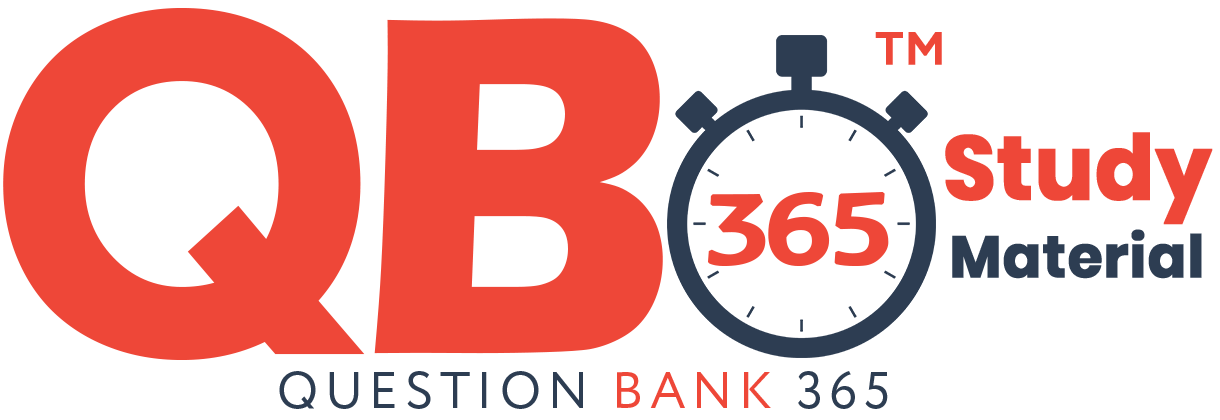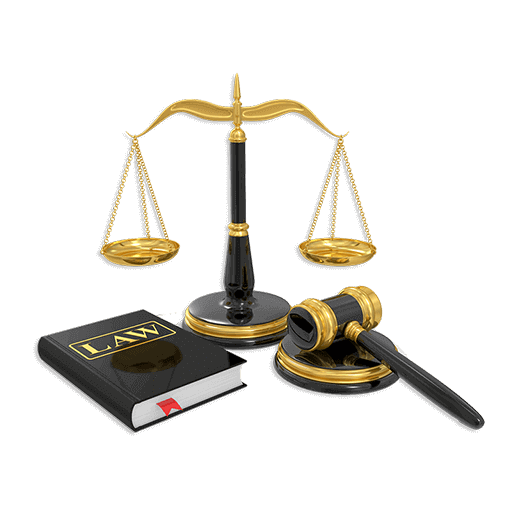CBSE 12th Standard Maths Subject Determinants Case Study Questions 2021
By QB365 on 21 May, 2021
QB365 Provides the updated CASE Study Questions for Class 12 Maths, and also provide the detail solution for each and every case study questions . Case study questions are latest updated question pattern from NCERT, QB365 will helps to get more marks in Exams
QB365 - Question Bank Software
CBSE 12th Standard Maths Subject Determinants Case Study Questions 2021
12th Standard CBSE
-
Reg.No. :
Maths
-
A company produces three products every day. Their production on certain day is 45 tons. It is found that the production of third product exceeds the production of first product by 8 tons while the total production of first and third product is twice the production of second product.
Using the concepts of matrices and determinants, answer the following questions.
(i) If x, y and z respectively denotes the quantity (in tons) of first, second and third product produced, then which of the following is true?(a) x + y + z = 45 (b) x + 8 = z (c) -2y+z=0 (d) all of these (ii) If \(\left(\begin{array}{ccc} 1 & 1 & 1 \\ 1 & 0 & -2 \\ 1 & -1 & 1 \end{array}\right)^{-1}=\frac{1}{6}\left(\begin{array}{ccc} 2 & 2 & 2 \\ 3 & 0 & -3 \\ 1 & -2 & 1 \end{array}\right)\) , then the inverse of \(\left(\begin{array}{ccc} 1 & 1 & 1 \\ 1 & 0 & -1 \\ 1 & -2 & 1 \end{array}\right)\) is
(a) \(\left(\begin{array}{lll} \frac{1}{3} & \frac{1}{3} & \frac{1}{3} \\ \frac{1}{2} & 0 & \frac{-1}{2} \\ \frac{1}{6} & \frac{-1}{3} & \frac{1}{6} \end{array}\right)\) (b) \(\left(\begin{array}{ccc} \frac{1}{2} & 0 & -\frac{1}{2} \\ \frac{1}{3} & \frac{1}{3} & \frac{1}{3} \\ \frac{1}{6} & \frac{-1}{3} & \frac{1}{6} \end{array}\right)\) (c) \(\left(\begin{array}{ccc} \frac{1}{3} & \frac{1}{2} & \frac{1}{6} \\ \frac{1}{3} & 0 & \frac{-1}{3} \\ \frac{1}{3} & \frac{-1}{2} & \frac{1}{6} \end{array}\right)\) (d) none of these (iii) x :y : z is equal to
(a) 12: 13: 20 (b) 11:15:19 (c) 15: 19: 11 (d) 13: 12: 20 (iv) Which of the following is not true?
(a) IAI = IA'I (b) (A'rl = (A-I), (c) A is skew symmetric-matrix of odd order, then IAI = 0 (d) IABI = IAI + IBI (a) -
Each triangular face of the Pyramid of Peace in Kazakhstan is made up of 25 smaller equilateral triangles as shown in the figure.
Using the above information and concept of determinants, answer the following questions
(i) If the vertices of one of the smaller equilateral triangle are (0, 0), \(\begin{equation} (3, \sqrt{3}) \end{equation}\) and \(\begin{equation} (3,-\sqrt{3}) \end{equation}\) then the area of such triangle is(a) \(\begin{equation} \sqrt{3} \text { sq. units } \end{equation}\) (b) \(\begin{equation} 2 \sqrt{3} \text { sq. units } \end{equation}\) (c) \(\begin{equation} 3 \sqrt{3} \text { sq. units } \end{equation}\) (d) none of these (ii) The area of a face of the Pyramid is
(a) \(\begin{equation} 25 \sqrt{3} \text { sq. units } \end{equation}\) (b) \(\begin{equation} 50 \sqrt{3} \text { sq. units } \end{equation}\) (c) \(\begin{equation} 75 \sqrt{3} \text { sq. units } \end{equation}\) (d) \(\begin{equation} 35 \sqrt{3} \text { sq. units } \end{equation}\) (iii) The length of a altitude of a smaller equilateral triangle is
(a) 2 units (b) 3 units (c) \(\begin{equation} \sqrt{3} \text { units } \end{equation}\) (d) 4 units (iv) If (2, 4), (2, 6) are two vertices of a smaller equilateral triangle, then the third vertex will lie on the line represented by
(a) x +y = 5 (b) \(\begin{equation} x=1+\sqrt{3} \end{equation}\) (c) \(\begin{equation} x=2+\sqrt{3} \end{equation}\) (d) 2x + y = 5 (v) Let A(a, 0), B(O, b) and C(1, 1) be three points. If \(\begin{equation} \frac{1}{a}+\frac{1}{b}=1 \end{equation}\) ,then the three points are
(a) vertices of an equilateral triangle (b) vertices of a right angled triangle (c)collinear (d) vertices of an isosceles triangle (a) -
Two schools A and B want to award their selected students on the values of Honesty, Hard work and Punctuality. The school A wants to award Rs. x each, Rs. y each and Rs.z each for the three respective values to its 3, 2 and 1 students respectivefy with a total award money of Rs. 2200. School B wants to spend Rs. 3100 to award its 4, 1 and 3 students on the respective values (by giving the same award money to the three values as school A). The total amount of award for one prize on each value is Rs. 1200.
Using the concept of matrices and determinants, answer the following questions.
(i) What is the award money for Honesty?(a) Rs.350 (b) Rs.300 (c) Rs.500 (d)Rs.400 (ii) What is the award money for Punctuality?
(a) Rs.300 (b) Rs.280 (c) Rs.450 (d) Rs.500 (iii) What is the award money for Hard work?
(a) Rs 500 (b) Rs.400 (c) 0 (d) none of these (iv) If a matrix P is both symmetric and skew-symmetric, then IPI is equal to
(a) 1 (b) -1 (c) 0 (d) none of these (v) If P and Q are two matrices such that PQ = Q and QP = P, then IQ21 is equal to
(a) IQI (b) IPI (c) 1 (d) 0 (a) -
Area of a triangle whose vertices are (x1, y1), (x2' y2) and (x3, y3) is given by thedeterminant
\(\begin{equation} \Delta=\frac{1}{2}\left|\begin{array}{lll} x_{1} & y_{1} & 1 \\ x_{2} & y_{2} & 1 \\ x_{3} & y_{3} & 1 \end{array}\right| \end{equation}\)
Since, area is a positive quantity, so we always take the absolute value of the determinant Δ. Also, the area of the triangle formed by three collinear points is zero.
Based on the above information, answer the following questions
(i) Find the area of the triangle whose vertices are (-2, 6), (3, -6) and (1, 5).(a) 30 sq. units (b) 35 sq. units (c) 40 sq. units (d) 15.5 sq. units (ii) If the points (2, -3), (k, -1) and (0, 4) are collinear, then find the value of 4k
(a) 4 (b) \(\begin{equation} \frac{7}{140} \end{equation}\) (c) 4 (d) \(\begin{equation} \frac{40}{7} \end{equation}\) (iii) If the area of a triangle ABC, with vertices A(1, 3), B(O, 0) and C(k, 0) is 3 sq. units, then a value of k is
(a) 2 (b) 3 (c) 4 (d) 5 (iv) Using determinants, find the equation of the line joining the points A(1, 2) and B(3, 6).
(a) y = 2x (b) x = 3y (c) y = x (d) 4x-y = 5 (v) If A = (11, 7), B = (5, 5) and C = (-1, 3), then
(a) \(\begin{equation} \Delta A B C \end{equation}\) is scalene triangle (b) \(\begin{equation} \Delta A B C \end{equation}\) is equilateral triangle (c) A, B and C are collinear (d) None of these (a) -
Gaurav purchased 5 pens, 3 bags and 1 instrument box and pays Rs. 16. From the same shop, Dheeraj purchased 2 pens, 1 bag and 3 instrument boxes and pays Rs. 19, while Ankur purchased 1 pen, 2 bags and 4 instrument boxes and pays Rs. 25.
Using the concept of matrices and determinants, answer the following questions.
(i) The cost of one pen is(a) Rs. 2 (b) Rs. 5 (c) Rs. 1 (d) Rs. 3 (ii) What is the cost of one pen and one bag?
(a) Rs. 3 (b) Rs. 5 (c) Rs. 7 (d) Rs. 8 (iii) What is the cost of one pen and one instrument box?
(a) Rs. 7 (b) Rs. 6 (c) Rs. 8 (d) Rs. 9 (iv) Which of the following is correct?
(a) Determinant is a square matrix. (b) Determinant is a number associated to a matrix (c) Determinant is a number associated to a square matrix (d) All of the above (v) From the matrix equation AB = AC, it can be concluded that B = C provided
(a) A is singular (b) A is non-singular (c) A is symmetric (d) A is square (a)
Case Study Questions
*****************************************
CBSE 12th Standard Maths Subject Determinants Case Study Questions 2021 Answer Keys
-
(i) (d) : According to given condition, we have the following system of linear equations.
x + y + z = 45
x + 8 = z or x + 0·y - z = -8
and x + z = 2y or x - 2y + z = 0
(ii) (c): Let \(A=\left(\begin{array}{ccc} 1 & 1 & 1 \\ 1 & 0 & -2 \\ 1 & -1 & 1 \end{array}\right)\) then we have,
\(A^{-1}=\frac{1}{6}\left(\begin{array}{ccc} 2 & 2 & 2 \\ 3 & 0 & -3 \\ 1 & -2 & 1 \end{array}\right)\)
Now, (A')-1 = (A-1)'
\(=\frac{1}{6}\left(\begin{array}{ccc} 2 & 3 & 1 \\ 2 & 0 & -2 \\ 2 & -3 & 1 \end{array}\right)=\left(\begin{array}{ccc} \frac{1}{3} & \frac{1}{2} & \frac{1}{6} \\ \frac{1}{3} & 0 & \frac{-1}{3} \\ \frac{1}{3} & \frac{-1}{2} & \frac{1}{6} \end{array}\right)\)
(iii) (b) : The above system of equations can be written in matrix form as
A'X = B, where
\(A^{\prime}=\left(\begin{array}{ccc} 1 & 1 & 1 \\ 1 & 0 & -1 \\ 1 & -2 & 1 \end{array}\right), X=\left[\begin{array}{c} x \\ y \\ z \end{array}\right] \text { and } B=\left[\begin{array}{c} 45 \\ -8 \\ 0 \end{array}\right]\)
\(\Rightarrow X=\left(A^{\prime}\right)^{-1} B=\frac{1}{6}\left[\begin{array}{ccc} 2 & 3 & 1 \\ 2 & 0 & -2 \\ 2 & -3 & 1 \end{array}\right]\left[\begin{array}{c} 45 \\ -8 \\ 0 \end{array}\right]\)
\(=\frac{1}{6}\left[\begin{array}{c} 90-24 \\ 90 \\ 90+24 \end{array}\right]=\frac{1}{6}\left[\begin{array}{c} 66 \\ 90 \\ 114 \end{array}\right]=\left[\begin{array}{c} 11 \\ 15 \\ 19 \end{array}\right]\)
Thus, x:y:z = 11: 15: 19
(iv) (d) : Clearly, IABI = IAI ·IBI
(v) (b) -
(i) (c) : Area of triangle is given by
\(\begin{equation} =\left|\frac{1}{2}[1(-3 \sqrt{3}-3 \sqrt{3})]\right| \end{equation}\) [Expanding along RI]
\(\begin{equation} =3 \sqrt{3} \text { sq. units } \end{equation}\)
(ii) (c) : Since a face of the Pyramid consist of 25 smaller equilateral triangles
\(\therefore\) Required area = \(\begin{equation} 25 \times 3 \sqrt{3}=75 \sqrt{3} \text { sq. units } \end{equation}\)
(iii) (b) : Area of equilateral triangle \(\begin{equation} =\frac{\sqrt{3}}{4} a^{2} \end{equation}\)
\(\begin{equation} \therefore 3 \sqrt{3}=\frac{\sqrt{3}}{4} a^{2} \Rightarrow a^{2}=12 \Rightarrow a=2 \sqrt{3} \end{equation}\)
Let h be the length of altitude of a smaller equilateral triangle. Then
\(\begin{equation} \frac{1}{2} \times \text { base } \times \text { height }=3 \sqrt{3} \end{equation}\)
\(\begin{equation} \Rightarrow \quad \frac{1}{2} \times 2 \sqrt{3} \times h=3 \sqrt{3} \Rightarrow h=3 \text { units } \end{equation}\)
(iv) (c) : Let the third vertex be (x, y), then we get
\(\begin{equation} \frac{1}{2}\left|\begin{array}{lll} 2 & 4 & 1 \\ 2 & 6 & 1 \\ x & y & 1 \end{array}\right|=\pm 3 \sqrt{3} \end{equation}\)
\(\begin{equation} \Rightarrow \frac{1}{2}[2(6-y)-4(2-x)+1(2 y-6 x)]=\pm 3 \sqrt{3} \end{equation}\)
\(\begin{equation} \Rightarrow \quad 12-2 y-8+4 x+2 y-6 x=\pm 6 \sqrt{3} \end{equation}\)
\(\begin{equation} \Rightarrow \quad 4-2 x=\pm 6 \sqrt{3} \end{equation}\)
\(\begin{equation} \Rightarrow 2-x=\pm 3 \sqrt{3} \Rightarrow x=2 \pm 3 \sqrt{3} \end{equation}\)
(v) (c) : Area of \(\begin{equation} \Delta A B C=\frac{1}{2}\left|\begin{array}{lll} a & 0 & 1 \\ 0 & b & 1 \\ 1 & 1 & 1 \end{array}\right| \end{equation}\)
\(\begin{equation} =\frac{1}{2}[a(b-1)-0+1(0-b)]=\frac{1}{2}(a b-a-b)=0 \end{equation}\)
\(\begin{equation} \left[\because \frac{1}{a}+\frac{1}{b}=1 \Rightarrow b+a=a b\right] \end{equation}\)
\(\therefore\) Points A, Band C are collinear. -
Three equations are formed from the given statements :
3x + 2y + z = 2200
4x + y + 3z = 3100
and x + y + z = 1200
Converting the system of equations in matrix form, we get
\(\begin{equation} \left[\begin{array}{lll} 3 & 2 & 1 \\ 4 & 1 & 3 \\ 1 & 1 & 1 \end{array}\right]\left[\begin{array}{l} x \\ y \\ z \end{array}\right]=\left[\begin{array}{l} 2200 \\ 3100 \\ 1200 \end{array}\right] \end{equation}\)
i.e., PX= Q,
where \(\begin{equation} P=\left[\begin{array}{lll} 3 & 2 & 1 \\ 4 & 1 & 3 \\ 1 & 1 & 1 \end{array}\right], X=\left[\begin{array}{l} x \\ y \\ z \end{array}\right] \end{equation}\) and \(\begin{equation} Q=\left[\begin{array}{l} 2200 \\ 3100 \\ 1200 \end{array}\right] \end{equation}\)
\(\begin{equation} |P|=3(1-3)-2(4-3)+1(4-1)=-6-2+3=-5 \neq 0 \end{equation}\)
\(\begin{equation} \Rightarrow X=P^{-1} \end{equation}\) provided p-l exists
\(\begin{equation} \therefore \text { adj } P=\left[\begin{array}{ccc} -2 & -1 & 5 \\ -1 & 2 & -5 \\ 3 & -1 & -5 \end{array}\right] \end{equation}\)
\(\begin{equation} \therefore \quad P^{-1}=\frac{1}{|P|}(\operatorname{adj} P) \end{equation}\)
\(\begin{equation} =\frac{1}{-5}\left[\begin{array}{ccc} -2 & -1 & 5 \\ -1 & 2 & -5 \\ 3 & -1 & -5 \end{array}\right]=\frac{1}{5}\left[\begin{array}{ccc} 2 & 1 & -5 \\ 1 & -2 & 5 \\ -3 & 1 & 5 \end{array}\right] \end{equation}\)
\(\begin{equation} \therefore \quad X=\frac{1}{5}\left[\begin{array}{ccc} 2 & 1 & -5 \\ 1 & -2 & 5 \\ -3 & 1 & 5 \end{array}\right]\left[\begin{array}{c} 2200 \\ 3100 \\ 1200 \end{array}\right] \end{equation}\)
\(\begin{equation} =\frac{1}{5}\left[\begin{array}{c} 4400+3100-6000 \\ 2200-6200+6000 \\ -6600+3100+6000 \end{array}\right]=\left[\begin{array}{l} 300 \\ 400 \\ 500 \end{array}\right] \end{equation}\)
\(\begin{equation} \Rightarrow x=300, y=400 \text { and } z=500 \end{equation}\)
Hence the money awarded for Honesty, Hardwork and Punctuality are Rs.300, Rs. 400 and Rs.500 respectively
(i) (b)
(ii) (d) .
(iii) (b)
(iv) (c) : If a matrix P is both symmetric and skew skewsymmetric then it will be a zero matrix. So, IPI = 0.
(v) (a): We have Q2 = QQ = Q(PQ)
= (QP) Q = PQ = Q
\(\begin{equation} \therefore \end{equation}\) IQ2| = IQI -
(i) (d) : Let be the area of the triangle then,
\(\begin{equation} =\frac{1}{2}|-2(-6-5)-6(3-1)+1(15+6)| \end{equation}\) [Expanding along R1]
\(\begin{equation} \Rightarrow \quad \Delta=\frac{1}{2}|43-12|=15.5 \mathrm{sq} . \text { units } \end{equation}\)
(ii) (d) : The given points are collinear.
\(\begin{equation} \therefore \frac{1}{2}\left|\begin{array}{ccc} 2 & -3 & 1 \\ k & -1 & 1 \\ 0 & 4 & 1 \end{array}\right|=0 \end{equation}\)
Expanding along R1',we get
\(\begin{equation} 2(-1-4)+3(k)+1(4 k)=0 \end{equation}\)
\(\begin{equation} \Rightarrow 7 k-10=0 \Rightarrow k=\frac{10}{7} \Rightarrow 4 k=\frac{40}{7} \end{equation}\)
(iii) (a) : Area of \(\begin{equation} \Delta A B C=3 \text { sq. units } \end{equation}\) [Given]
\(\begin{equation} \Rightarrow \frac{1}{2}\left|\begin{array}{lll} 1 & 3 & 1 \\ 0 & 0 & 1 \\ k & 0 & 1 \end{array}\right|=\pm 3 \Rightarrow\left|\begin{array}{lll} 1 & 3 & 1 \\ 0 & 0 & 1 \\ k & 0 & 1 \end{array}\right|=\pm 6 \end{equation}\)
\(\begin{equation} \Rightarrow 1(0-0)-3(0-k)+1(0-0)=\pm 6 \end{equation}\)
\(\begin{equation} \Rightarrow 3 k=\pm 6 \Rightarrow k=\pm 2 . \end{equation}\)
(iv) (a) : Let Q(x, y) be any point on the line joining
A(1, 2) and B(3, 6). Then, area of \(\begin{equation} \Delta A B Q=0 \end{equation}\)
\(\begin{equation} \Rightarrow \frac{1}{2}\left|\begin{array}{lll} 1 & 2 & 1 \\ 3 & 6 & 1 \\ x & y & 1 \end{array}\right|=0 \end{equation}\)
\(\begin{equation} \Rightarrow 1(6-y)-2(3-x)+1(3 y-6 x)=0 \end{equation}\)
\(\begin{equation} \Rightarrow 6-y-6+2 x+3 y-6 x=0 \end{equation}\)
\(\begin{equation} \Rightarrow-4 x=-2 y \Rightarrow 2 x=y \end{equation}\)
(v) (c) : Area of ΔABC is given by
\(\begin{equation} \frac{1}{2}\left|\begin{array}{rrr} 11 & 7 & 1 \\ 5 & 5 & 1 \\ -1 & 3 & 1 \end{array}\right|=\frac{1}{2}[11(5-3)-7(5+1)+1(15+5)] \end{equation}\)
\(\begin{equation} =\frac{1}{2}[22-42+20]=0 \end{equation}\)
\(\therefore\) Points are collinear -
Let the cost of 1 pen = Rs. x, the cost of 1 bag = Rs. y, and the cost of 1 instrument box = Rs. z
According to the question, we have
5x + 3y + z = 16, 2x + Y + 3z = 19, x + 2y + 4z = 25
This system of equation can be written as AX = B,
where \(A=\left[\begin{array}{lll} 5 & 3 & 1 \\ 2 & 1 & 3 \\ 1 & 2 & 4 \end{array}\right], B=\left[\begin{array}{l} 16 \\ 19 \\ 25 \end{array}\right] \) and \(X=\left[\begin{array}{l} x \\ y \\ z \end{array}\right]\)
IAI = 5(4 - 6) - 3(8 - 3) + 1(4 - 1)
\(=-10-3(5)+3=-22 \neq 0\)
\(\therefore\) A -1 exists.
Now, X = A-1B, where \(A^{-1}=\frac{1}{|A|} \operatorname{adj} A\)
Here, \(\operatorname{adj} A=\left[\begin{array}{ccc} -2 & -5 & 3 \\ -10 & 19 & -7 \\ 8 & -13 & -1 \end{array}\right]^{\prime}=\left[\begin{array}{ccc} -2 & -10 & 8 \\ -5 & 19 & -13 \\ 3 & -7 & -1 \end{array}\right]\)
\(\therefore \quad A^{-1}=\frac{1}{-22}\left[\begin{array}{ccc} -2 & -10 & 8 \\ -5 & 19 & -13 \\ 3 & -7 & -1 \end{array}\right]\)
\(\therefore \quad X=\left[\begin{array}{l} x \\ y \\ z \end{array}\right]=\frac{1}{-22}\left[\begin{array}{ccc} -2 & -10 & 8 \\ -5 & 19 & -13 \\ 3 & -7 & -1 \end{array}\right]\left[\begin{array}{c} 16 \\ 19 \\ 25 \end{array}\right]\)
\(=\frac{1}{-22}\left[\begin{array}{c} -32-190+200 \\ -80+361-325 \\ 48-133-25 \end{array}\right]=\frac{-1}{22}\left[\begin{array}{c} -22 \\ -44 \\ -110 \end{array}\right]=\left[\begin{array}{l} 1 \\ 2 \\ 5 \end{array}\right]\)
\(\therefore\) x = 1, y = 2, z = 5
Hence, cost of one pen, one bag and an instrument box isRs. 1, Rs. 2 and Rs. 5 respectively.
(i) (c) : Cost of one pen is Rs. 1.
(ii) (a) : Cost of one pen. and one bag = Rs. (1 + 2) = Rs. 3
(iii) (b) : Cost of one pen and one instrument box
= Rs. (1 + 5) = Rs. 6
(iv) (c) : According to the definition of determinant, determinartt is a number associated to a square matrix.
(v) (b) : Given matrix equation is AB = AC Pre-multiplying by A-I on both sides, we get
\(A^{-1} A B=A^{-1} A C \Rightarrow\left(A^{-1} A\right) B=\left(A^{-1} A\right) C\)
\(\Rightarrow \quad I B=I C \quad\left(\because A A^{-1}=A^{-1} A=I\right)\)
\(\Rightarrow B=C\)
Since A-1 exists only if A i's non-singular
\(\therefore\) For B = C, A should be non-singular
Case Study Questions






































